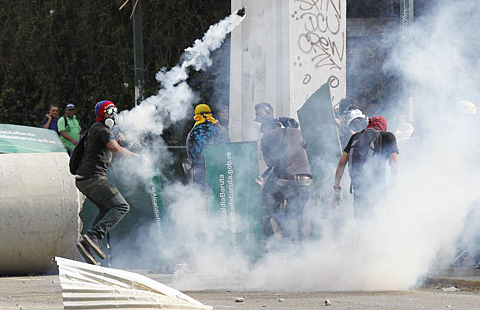Lessons to be learnt from MH370 search
Updated: 2014-04-02 07:43
By Wang Xiaoxuan (China Daily)
|
||||||||
Weeks have passed since the world lost contact with Malaysia Airlines flight MH370 and its 239 passengers and crew.
On Monday, China announced it was sending more planes and ships to the southern Indian Ocean, where the plane is believed to have crashed. By Monday, seven Chinese navy ships, carrying five helicopters in total, have been in the area of 320,000 square kilometers in the southern Indian Ocean where the plane is thought to have gone down.
China's emergency multi-departmental, quick-response mechanism has proved its competency. The day after the flight was reported missing, the marine and transport authorities, as well as the navy and air force, received orders to prepare to conduct search and rescue operations, and a series of Chinese merchant ships were also diverted from their courses and coordinated as part of the search and rescue operations.
Although there is little, if any, hope of finding any of the passengers and crew alive, President Xi Jinping and Premier Li Keqiang have vowed to make all-out efforts for as long as it takes to find what remains of the plane no matter the economic cost. And the search operations now underway involve the navy, the marine police, medical professionals and divers, scientific research and diplomatic departments, including China's embassies in Malaysia and Vietnam, and private corporations.
The incident has also displayed China's deep ocean search capability. The initial fleet of vessels, which was formed as soon as the incident was confirmed, was composed of 14 professional rescue ships, six marine police ships, and two marine planes. Later a dozen warships joined the search operations, including the dock landing ship Jinggangshan, the guided-missile destroyer Haikou and the amphibious assault ship Kunlunshan. And in all, 21 satellites have also been employed in the search operations.
China's search team has also supported the teams from other countries. As the Australian authorities acknowledged, images from Gaofen-1, China's high-resolution satellite have been very valuable and helpful in narrowing down the search area.
The missing flight is a tragedy, and it has been a test for China's search and rescue capabilities. While China's authorities and military forces have passed the test, the search missions have also revealed some deficiencies in China's search and rescue work. It is necessary to address these because China is a nation that faces many natural disasters, and it must be fully prepared to undertake rescue missions.
Lack of professional equipment has been the most notable problem. Among all the ships involved in the search for MH370, only Nanhai jiu 115 and Donghai jiu 101 and a few other ships have professional rescue equipment, so the others lag behind in efficiency. There are also gaps between China and the US in other technologies such as sea-probing equipment and telecommunications, which need to be addressed. China mainly sent transporter planes, which lacked the necessary equipment to probe the ocean. While the United States sent P-3C and P-8A planes and MH60-R helicopters with equipment that can probe to depths of 76 meters and cover 770 sq kms in four hours.
China's technology clearly needs to be improved. After the plane lost contact on March 8, more than one satellite received signals from it, but there is no report of any of China's satellites receiving a signal.
But besides technology, the incident has also shown that China urgently needs to boost its international soft power, almost all the important information was first obtained by Western media, which in turn put pressure upon Malaysia Airlines and the Malaysian government for more timely and accurate information. Chinese media mainly forwarded the news broken by their Western colleagues and they lacked the global influence to compel the Malaysian authorities to speak out.
Last but not least, more attention should be paid to international cooperation. The search and rescue efforts could well have been a race against time to save lives, but being limited by international laws and the absence of cooperation mechanisms, China and some of the other countries involved did not fully share timely information. The lessons from this tragedy must be drawn as they may save lives in the future.
The author is director of Naval Research Institute of the People's Liberation Army.

 Massive earthquake hits Chile
Massive earthquake hits Chile
 Venezuelan anti-govt protestors set on fire in rally
Venezuelan anti-govt protestors set on fire in rally
 Sino-US relations going mainstream
Sino-US relations going mainstream
 Chinese moving into E. Harlem
Chinese moving into E. Harlem
 Two Koreas exchange artillery fire
Two Koreas exchange artillery fire
 World's tallest ferris wheel opens in Las Vegas
World's tallest ferris wheel opens in Las Vegas
 Cherry blossoms in full bloom in Tokyo
Cherry blossoms in full bloom in Tokyo
 US-South Korea joint landing exercises in Pohang
US-South Korea joint landing exercises in Pohang
Most Viewed
Editor's Picks

|

|

|

|

|

|
Today's Top News
5 dead in magnitude 8.2 quake off Chile
MH370 'unlikely' to hurt ties
Xi's trip builds bridge to Europe
Weibo to list on Nasdaq
Beijing must help win the global battle on climate
Remembering a true hero of WWII
Drone falls in ROK island
We should join hands, Xi tells EU
US Weekly

|

|








